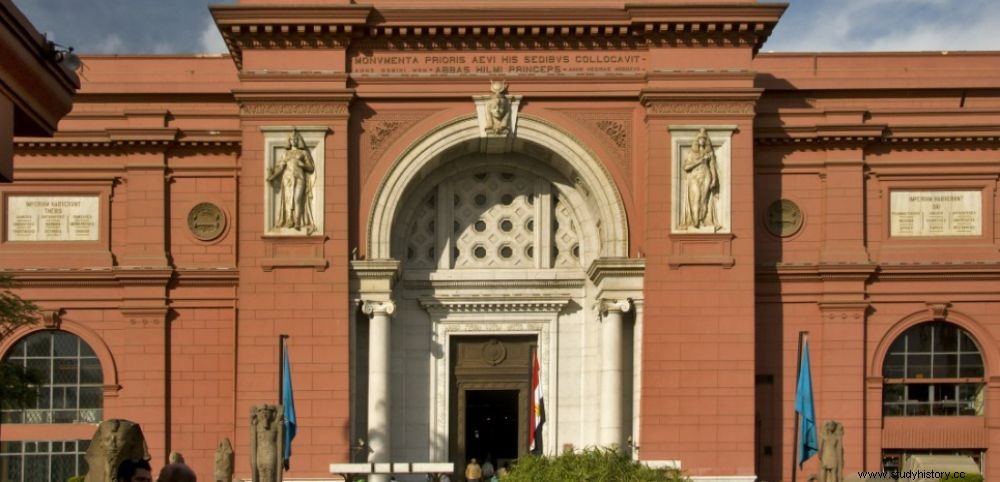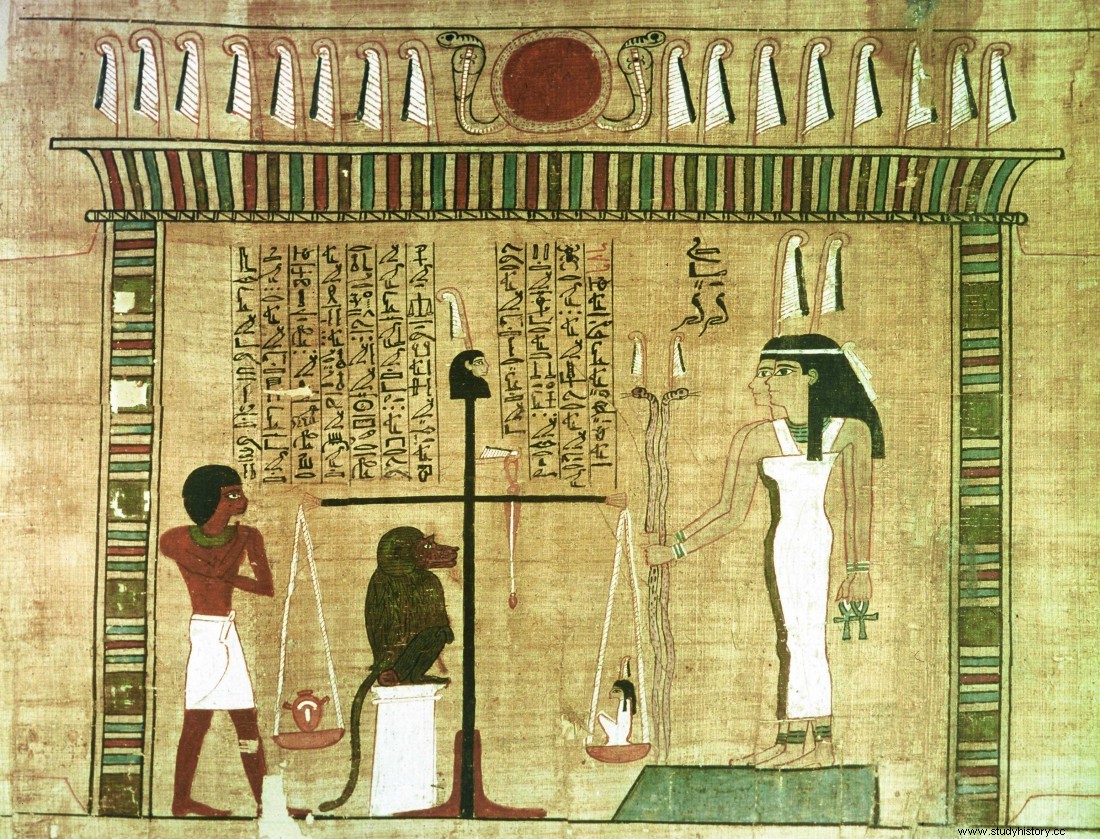 The Egyptian Museum in Cairo where the 4000-year-old manuscript was found.
The Egyptian Museum in Cairo where the 4000-year-old manuscript was found. HIEROGLYPHS. The Cairo Museum continues to unearth new treasures! A roll of parchment about 2.5 meters long, entirely covered on both sides with delicate hieroglyphs and colorful illustrations, has just been found on a dusty shelf by archaeologist Wael el-Sherbiny, associated with the University of Louvain (Belgium). This text with a total length of 5 m, 4000 years old, was among hundreds of fragments of ancient papyri and manuscripts. Its existence was revealed during the last International Congress of Egyptology held in Florence (Italy) in August 2015. It would be the oldest and longest leather manuscript ever found in Egypt.
This exceptional document, decorated with deities and supernatural entities with powerful magical powers, dates back to the beginning of the Middle Kingdom (2000 BC to 1780 BC). Or 1000 years before what was considered the oldest literary work left by the ancient Egyptians of the beginning of the New Kingdom (1500 BC):the Book of the Dead (read box). According to the Egyptologist, the provenance of the document, which would have been present in the collections of the Cairo museum for 70 years, could not be precisely established. However, it seems that it was bought from a local antiquity dealer by the French Institute of Oriental Archeology around the First World War, before being given to the Egyptian Museum in Cairo, just before the outbreak of the Second World War. world conflict. "Then it fell completely into oblivion “, specifies the researcher.
Wael el-Sherbiny therefore found himself faced with a real puzzle, the roll of leather having been found fragmented. A specialist in ancient religions, he was however able to reconstruct the order of the document thanks to his in-depth knowledge of the ancient sacred texts found inside certain sarcophagi. Several of the illustrations adorning this parchment have never been seen before. "The scroll features an extended version of a composition that was sometimes reproduced on certain Middle Kingdom sarcophagi (as early as 2000 BC) called ‘The Book of Two Paths’ , explains French Egyptologist Pascal Vernus, former director of the Ecole Pratique des Hautes Etudes (EPHE). (Read Sciences et Avenir n° 821- July 2015). It was implemented in the dense arsenal which aimed to ensure the dead the possibility of reviving in the Beyond". The Book of the Two Paths, a very obscure text, would thus be a gigantic "map" listing the different places of the afterlife, with their dangers, their guardians and the list of magic formulas to pronounce to cross all the tests along of the journey. The two paths being two roads, - a lower one, painted in black, and an upper one, in blue - traversing the beyond.
Only six other manuscripts of the same type have come down to us, but only in the form of papyrus and not parchment. The rolls of leather, although well known as a support in Pharaonic Egypt, are indeed more fragile than the plant documents preserved in the sands of the desert thanks to the dry climate. The text of this invaluable scroll, essential for better understanding the funerary beliefs of ancient Egyptians, should soon be published in its entirety.

An extract from the Book of the Dead, kept in the Louvre. © Sipa
The Book of the Dead
In Egyptian civilization, survival in the afterlife is a major concern. The Book of the Dead, which appeared at the end of the 17th Dynasty (1630 BC-1539 BC) and which persisted until Roman times, is a collection of magic recipes taken by the dead to their tomb for them. to face all the dangers of the afterlife and live forever. Of very heterogeneous composition, this summary of survival includes formulas inherited from the Texts of the pyramids (2350 a.J.C-2321 av.J.C). This collection of magic formulas copied on papyrus was placed near the deceased and intended to help him get out of the funerary chamber in one way or another. It was the scholar Richard Lepsius (1810-1884), who, by translating a late version of these texts, baptized Book of the Dead the one whose real name is "Formulas for going out by day" (see Sciences et Avenir n°649, 2001 "The Secret Books of Immortality").
